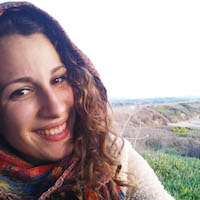More about Jewish Museum Berlin
Works at Jewish Museum Berlin

Contributor
This is not just a Holocaust museum; but a museum of German Jewish history.
It is a place where the intricate history of Jewishness throughout German antiquity can be explored. While it is impossible to dichotomize German Jewish history and the horrors of the Holocaust, this is not the only topic that is covered here. This is a sanctuary dedicated to exploring Jewish identity.
Architect Daniel Libeskind designed this stunning building which opened to the public in 2001. The design of the building is integral to the goal of understanding Jewish history. There are five voids. These are empty angular spaces that rise up through the floors and are about 66 feet tall. They are neither heated nor illuminated by artificial lighting. They are meant to represent “that which cannot be exhibited," essentially a tribute to the Jewishness that has been greatly snuffed from German culture. It is a way to make this loss visible and tangible. Two of these voids can be entered: the Void of Voidness and the Void of Memory.
There are also three axes that run through the building. These are said to represent the three paths of Jewish life in Germany: emigration to Germany, continuity in Germany, and the Holocaust. The zigzagging design of the building was inspired from a broken Star of David. Since opening, this museum has quickly become one of the most highly regarded Jewish history museums in the world and is one of the largest in Europe.
Featured Content
Here is what Wikipedia says about Jewish Museum Berlin
The Jewish Museum Berlin (Jüdisches Museum Berlin) was opened in 2001 and is the largest Jewish museum in Europe. On 3,500 square metres (38,000 square feet) of floor space, the museum presents the history of the Jews in Germany from the Middle Ages to the present day, with new focuses and new scenography. It consists of three buildings, two of which are new additions specifically built for the museum by architect Daniel Libeskind. German-Jewish history is documented in the collections, the library and the archive, and is reflected in the museum's program of events.
From its opening in 2001 to December 2017, the museum had over eleven million visitors and is one of the most visited museums in Germany.
Opposite the building ensemble, the W. Michael Blumenthal Academy of the Jewish Museum Berlin was built – also after a design by Libeskind – in 2011/2012 in the former flower market hall. The archives, library, museum education department, a lecture hall and the Diaspora Garden can all be found in the academy.
Check out the full Wikipedia article about Jewish Museum Berlin











